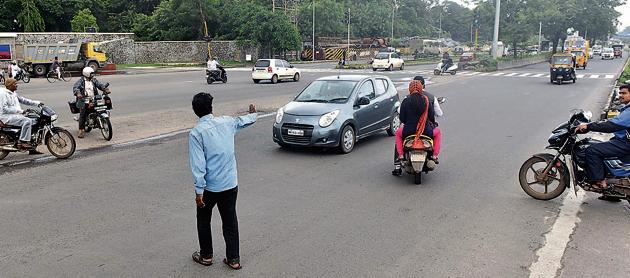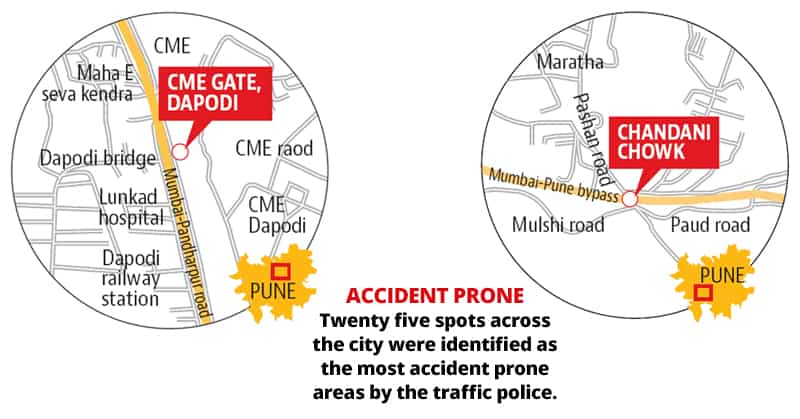Speeding, traffic violations make 25 spots accident-prone in Pune
Out of the 25 spots identified as most accident prone, team Hindustan Times visited three spots on Friday to understand the reason behind the growing number of accidents and ways to prevent them.
The Hindustan Times team did a spot check of the 25 locations identified by the Pune traffic police as most accident prone zones to understand what is the reason behind the rising number of accidents there and what solutions can be put in place to avoid it.

The traffic department has identified 25 spots across the city as the most accident prone areas which have witnessed two or more accidents since January this year. Out of the 25 spots, team Hindustan Times visited three spots on Friday to understand the reason behind the growing number of accidents and ways to prevent them. The locations identified include majority of junctions where vehicles come from all sides and the situation can be chaotic in case of no traffic signals or traffic violations.

On Friday, Hindustan Times visited Chandani chowk, old Mumbai-Pune highway where junctions like College of Military Engineering (CME) gate and Andi Ubavani chowk have been identified as accident prone. Convener of city based NGO Pedestrians First, Prashant Inamdar stressed that better traffic engineering is required while designing junctions and roads which is not seen at most places in Pune.
At the CME gate in Dapodi, which is also the old Mumbai-Pune road, the team witnessed vehicles approaching the junction in high speed because the road is very wide. This in turn, made it unsafe for smaller vehicles and pedestrians on the road. Rajesh Sharma, a pedestrian trying to cross the junction said, "Here the vehicles come at a very high speed and it becomes risky not just for the pedestrians but also for the vehicles which have to cross the road. There are traffic signals but many people don't follow rules, adding to the chaos."
Sharma emphasised that accidents usually occur on this road because people don't follow traffic rules.
The situation at Chandni chowk was no different. With vehicles coming from all sides and moving towards either Paud road, Bavdhan road or the Mumbai-Pune bypass, the situation seemed chaotic especially with vehicles driving at a higher speed.
Ashish Joshi, a resident of Bavdhan, said, "The traffic situation at Chandani chowk gets worse during the peak hours when the vehicle traffic is heavy. There are all sorts of vehicles including luxury buses, cars, two wheelers among others making it very difficult to drive. Usually, traffic police is present at this junction during peak hours which helps a lot."
Speaking about problems at Chandni chowk, Inamdar said, “Areas like Bavdhan have been developed recently. Also, the Mumbai-Bengaluru bypass which was not there earlier has come up recently. This bypass also serves as the road for the IT crowd towards Hinjewadi. Hence, Chandni chowk is today catering to very high traffic flow which was not anticipated while designing this junction. Considering the lack of planning which has led to this haphazard development of roads, presently very little can be done to address the issues of traffic congestion at Chandni chowk.”
Inamdar stated that on roads like the old Mumbai-Pune highway, where there are junctions and pedestrians and vehicles are crossing these roads, the administration would have earlier given thought as to how wide the roads should be. Having roads unnecessarily wide is also risky for pedestrians and even other vehicles which can be witnessed near CME.
Inamdar suggested that on junctions on highways there should be synchronised pedestrian signals and a resting space for them every 10 metres.
Ashok Morale, DCP Traffic, stated that traffic violations remain a major reason for accidents. "If the traffic is more disciplined then accidents can definitely reduce. Apart from this, our department along with an engineer from the corporation is surveying the spots and will soon analyse if setting up of any infrastructure would help prevent accidents on these spots,” he said.





